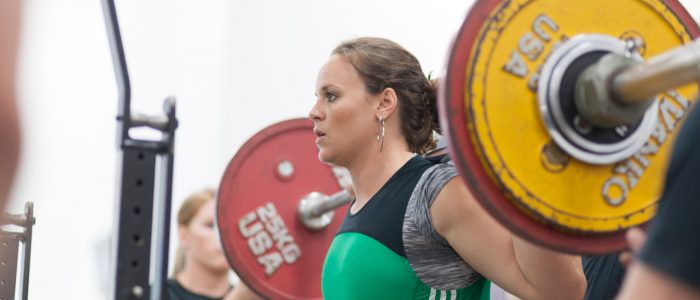
“There’s no way I could lift 999lbs right now.” Every powerlifting coach has heard it. Insert whatever weight or lift you want. And it’s always at a point in the cycle where if the lifter could hit their goal weight, it would mean everything had gone very wrong.
Training for strength sports is a little bit of an odd beast. In any competition or sport you’ve got the unknowns and unpredictable aspects of the competition itself that you can’t simply practice over and over again until you’ve got it perfect and then go do it live. But strength sports require an extra leap of faith.
You will typically train for months without coming even close to what you’re expecting to do in competition. If your powerlifting contest 3rd attempt deadlift is planned to be 300lbs, you might not go over 270lbs in training.
You have to take it on faith, even blind faith if you’re generally new to training for competitive strength sports, that you’re going to be able to lift 300lbs when it counts.
Which means you’re going to have session after session, for weeks on end, where you’re thinking that it’s going to be impossible for you to achieve what you hope to achieve on contest day.
There are two things you should keep in mind, if you want to keep your sanity and enjoy the process:
The first is that this is inherently the nature of the sport. It’s normal that you feel relatively weak when you’re two months out from the event. If you’re starting a new cycle right after a previous contest, it’s totally normal that you can’t lift the weight you just lifted in contest a couple weeks ago. Why are you even trying? Stop that. The more experience you have the more you will be willing to trust the process and take it on faith that you’re going to be able to perform on game day. But until then, you’ll need to mentally rehearse, visualize, and practice a very cognitive, if not subconscious, understanding that this is the process.
The second is that there are always opportunities, in every single workout, to do better than you’ve ever done before. This requires taking real ownership over and responsibility for your training – which you should be doing anyway. But if you’re just doing exactly what your coach writes down in your programming, you’re maybe getting 80% out of every session, at best.
Your coach, good as they may be, has no way of knowing in advance all the various things that can affect your state going into a session. They’re going to plan for you to progressively get stronger over the course of a cycle, but they’re also going to leave in some room for error. Too little and you’re not going to be able to hit the targets set out for each cycle, too much and you’re not going to work hard enough to progress.
But you are in it, and you have every piece of the puzzle. You know what you did last week because it’s in your training log. You know what your coach has in mind. And you know how things feels on this particular training day.
You have the ability, I would even say the responsibility, to make the call to ensure that every training session has a PR of some kind in it. Of course that doesn’t mean you’re going to pull a new 1RM every time. But it means you hit something for 3 that you only hit for 2. Or you do an extra set. Or you bump up the weight you previously did for a double or a triple. There are dozens of ways to PR in every session, and it’s on you to figure it out on the fly and execute it.
Training for competitive strength sports is incredibly rewarding, and not a little unique. The quicker you internalize this mindset and start figuring out how to make every training day a great day, the more fun you’re going to have and the better you’re going to perform.


Leave a Reply